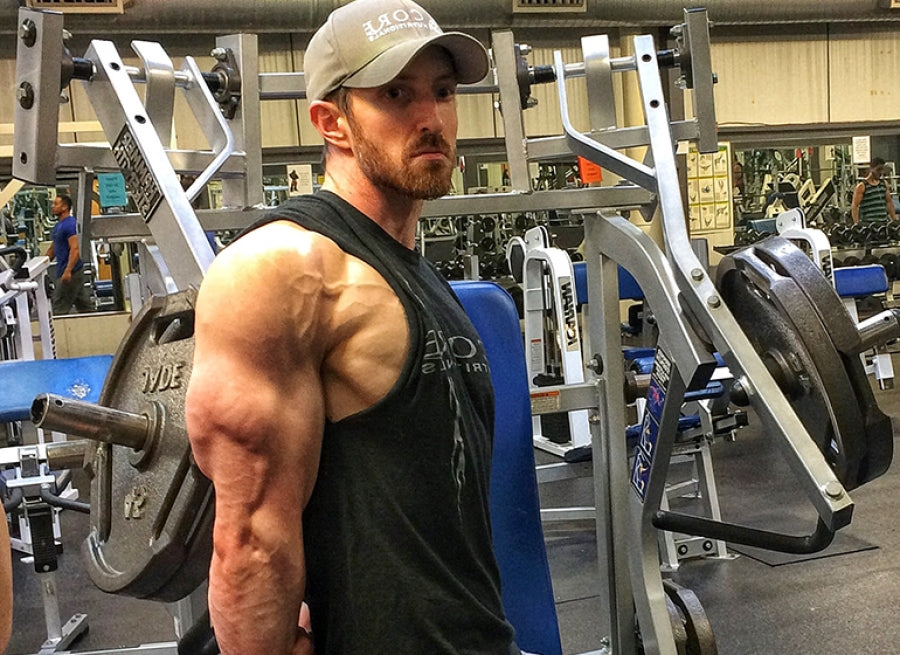
I often field questions from people wondering why they can't seem to add strength to certain movements. It's usually involving exercises for biceps, triceps, or delts, such as curls, skull crushers, or DB laterals. Pretty much any lift for smaller muscle groups.
This ends up being a huge source of frustration for people because while they are piling the pounds onto their squats and deadlifts, nothing is happening on these other moves. It's also devastating for those that are primarily "results motivated". This often leads a lot of people to fall out of training completely or just putting forth lackluster effort for a while.
A lot of this stems from the mentality of viewing every training session as either a success or a failure. People fall into the trap of only viewing a training session as effective if they add strength, and if they don't add strength, then they have failed. This is setting yourself up for trouble because by these standards you will fail WAY more than you succeed.
There are 3 main things to consider when looking at why you'll add strength more slowly to lifts such as curls and laterals than you will to lifts like squats and deadlifts.
1. STRENGTH POTENTIAL- Exercises involving smaller and fewer muscle groups are going to have less strength potential. For example, if I want to add 5 lbs to my squat, I only need to get a tiny bit stronger in several areas such as my quads, hamstrings, glutes, abs, and back. They will work by committee to execute the lift. However, if I want to add 5lbs to my curls, I must get massively stronger in my biceps because this will be the primary muscle group performing the lift. A bigger muscle will be a stronger muscle and the growth potential in your biceps can't match the growth potential of your quads, glutes, and hamstrings combined.
2. IMPROVED TECHNIQUE AND NEURAL COORDINATION - Compound movements involving movement at multiple joints will have greater potential for form improvement and increases in neural coordination. In other words you'll become more efficient at performing the squat as it takes time to learn, whereas most people know how to perform a curl because bending at the elbow is not a complex movement. The more complex the movement, the more potential there is for enhancing the efficiency of the movement.
3. % OF INCREASE - If someone can curl 50lbs and they add 10lbs to that number it is HUGE. This constitutes a 20% increase in strength. How huge is this? If you can deadlift 400lbs, you would have to increase your lift by 80lbs to equal the same percentage increase in your curls.
REPS PERFORMED/VOLUME INCREASE - My previous point of % of increase becomes compounded when you consider that people will regularly perform a 1-rep max for deadlifts but very few people are going to perform a 1-rep max for curls. When we can add 5lbs to the bar on our squat and eek out a single rep we rejoice! Yet for some reason we add 5lbs to the curl bar and rather than expecting to get a single rep, we expect 6-10 reps. So you will have to lift that extra 5lbs on each of those reps. That's not really being fair to our biceps.
Taking all of this into consideration, the reason I say you shouldn't view every training session as a success or failure is because you are going to fail WAY more often than you succeed. Most people make huge strength gains their first few years and then things slow down dramatically. If you think you will be able to add 5lbs to the bar every training session, you are sorely mistaken. How about every month? Also not going to happen. So how much can you expect?
Well, let's say that from the time you pick up a weight that you increase a particular lift by 150lbs. over the course of your career. For some lifts you will increase more (like squats and deadlifts), but some lifts you will increase less (like DB laterals and DB kickbacks), this is particularly true for the female lifters.
Now let's say that you train for 17 years to add that 150lbs to the bar. How many pounds will you be able to add to the bar each month on average? 0.73 lbs.
That's less that 9lbs for the entire year! Also, keep in mind that most of this progress will likely come in the first few years of training. So while you'll far exceed this pace in the first few years of training, after 3-4 years your pace will even be significantly slower than 9lbs per year.
So with this knowledge, there are a few takeaways. First is that you should manage training variables appropriately with the knowledge that progressive overload isn't the only mechanism by which you can build muscle.
Secondly, and most importantly, you need to enjoy the actual act of training. If you only enjoy training sessions where you get stronger, you will never last.









